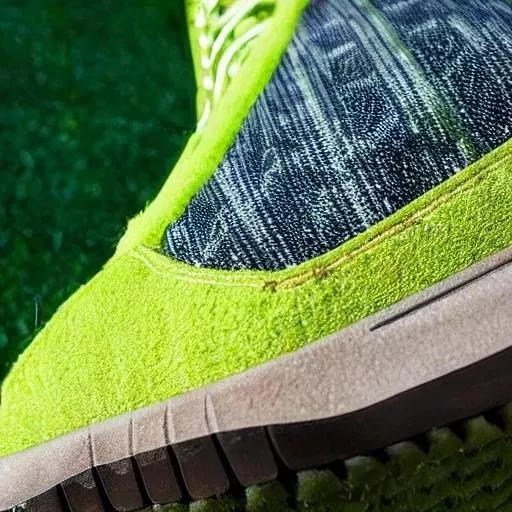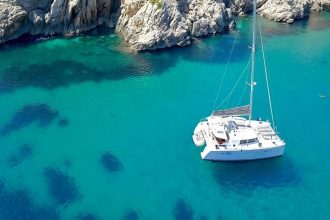Today is 09/22/2025 13:49:19 (MM/DD/YYYY HH:49:19)
In a world increasingly demanding versatility from our gear, a fundamental question often surfaces for the active individual: can one pair of shoes truly excel across diverse terrains? This perennial dilemma, particularly pressing for those navigating both rugged trails and meticulously manicured artificial surfaces, highlights a crucial point of contention in footwear technology․ Many outdoor enthusiasts, balancing budget constraints with an insatiable appetite for adventure, ponder whether their trusted hiking shoes, meticulously engineered for the wilderness, possess the adaptability required to perform effectively and safely on artificial turf․ It’s a query that transcends mere convenience, delving into performance optimization and injury prevention, shaping how we approach our varied athletic pursuits․
The advent of advanced synthetic turf fields has revolutionized sports and recreational activities, offering consistent playability regardless of weather․ However, this modern marvel presents unique challenges for footwear, differing significantly from the demands of natural grass or rocky trails․ While traditional cleats are designed for aggressive grip in softer soils, their sharp, elongated studs can ironically compromise the integrity of artificial turf’s intricate mesh matrix, potentially causing damage and, more critically, increasing the risk of injury to the wearer․ This stark contrast necessitates a closer examination of footwear characteristics, especially when considering the robust construction of hiking shoes, celebrated for their deep lug patterns, superior shock absorption, and unparalleled heel stability—qualities undeniably crucial for traversing uneven, natural landscapes․
| Category | Hiking Shoes | Turf Shoes | Cleats (Traditional) |
|---|---|---|---|
| Primary Purpose | Traction and support on natural, uneven terrain (trails, mountains) | Grip and cushioning on artificial turf and hard natural surfaces | Aggressive traction on soft natural grass, mud, and soil |
| Key Features | Deep, multi-directional lug patterns (e․g․, 4․8mm+), robust uppers, significant shock absorption, heel stability, often waterproof․ | Shorter, numerous rubber studs or nubs, moderate cushioning, balanced flexibility, often breathable uppers․ | Longer, sharper studs (plastic, metal) designed to penetrate soft ground, minimal cushioning, rigid sole for power transfer․ |
| Turf Suitability | Moderate to Low․ Aggressive lugs can damage turf, create excessive grip (leading to knee/ankle strain), or feel unstable due to reduced surface area․ Better for non-technical hikes․ | High․ Specifically engineered to provide optimal grip on synthetic surfaces without causing damage, offering a balance of traction and comfort․ | Very Low․ Can severely damage artificial turf surfaces and significantly increase the risk of injury (e․g․, ACL tears) due to “sticking” rather than releasing․ |
| Best Use Case | Long-distance hiking, trail running (lighter models), backpacking, navigating wet and loose natural ground․ | Football (soccer), lacrosse, field hockey, ultimate frisbee, general training on artificial turf fields․ | Football (American), rugby, baseball, soccer (on natural grass fields only)․ |
| Recommendation/Link | For understanding turf footwear specifics: Unisport: Choosing Outsoles | General sports footwear information: Nike: Find Your Fit |
Unpacking the Traction Paradox: Hiking Lugs vs․ Turf Dynamics
The core of the “hiking shoes on turf” debate revolves around traction․ Hiking shoes are famously equipped with deep, aggressive lugs—outsole patterns meticulously crafted to bite into dirt, mud, and loose rock, providing unyielding grip on unpredictable natural paths․ This design, while incredibly effective for ascending steep inclines or traversing slippery roots, presents a fundamental mismatch for artificial turf․ As industry experts frequently articulate, the synthetic fibers and rubber infill of turf fields demand a different kind of interaction․ “Using such cleats on artificial turf can tear the mesh matrix and damage the integrity of the synthetic layers,” warns one authority, a sentiment directly applicable to the overly aggressive lugs of many hiking boots․ The rigid, unyielding nature of turf means those deep lugs, instead of sinking in, can effectively “stick,” creating pivot points that stress the knee and ankle during lateral movements, thereby dramatically escalating injury risks, a concern echoed by sports medicine professionals;
Cushioning, Stability, and the Unseen Impact
Beyond traction, the structural characteristics of hiking shoes, particularly their emphasis on shock absorption and heel stability, introduce another layer of complexity․ Designed for enduring long treks over hard, uneven ground, these shoes often feature substantial cushioning and rigid heel collars, brilliantly keeping feet stable and comfortable for prolonged periods․ However, on the uniformly firm, often unforgiving surface of artificial turf, this very cushioning can become a liability․ “Regular sneakers not only slip, but the cushion can flex too much on hard cuts, risking ankle sprain/strain,” one athlete recounted, a concern that can extend to overly cushioned hiking footwear․ While providing comfort, excessive flexibility or an overly high stack height in the sole can impede the instantaneous ground feel crucial for quick directional changes inherent in many turf sports, potentially compromising athletic agility and responsiveness․
The Rise of the Hybrid: Trail Runners and Dedicated Turf Shoes
Fortunately, the footwear industry, ever-evolving, has been diligently addressing this multifaceted challenge, presenting compelling alternatives․ For those seeking a versatile solution, the emergence of trail runners has been a game-changer․ These shoes typically offer a less aggressive lug pattern than traditional hiking boots, often described as “trail-running-inspired hiking shoes,” providing a robust blend of agility, durability, and support without the excessive bite that damages turf․ Possessing sufficient cushioning and dependable grip, they represent a remarkably effective compromise for non-technical hikes and occasional, less intensive use on artificial surfaces․ Yet, for dedicated turf activities, the consensus among coaches and players alike remains clear: dedicated turf shoes are unparalleled․ These specialized shoes feature numerous, shorter rubber nubs or patterns, designed to distribute pressure evenly across the synthetic surface, offering optimal traction and preventing turf damage․ They embody a perfect synergy of grip, cushioning, and lateral stability, making them the superior choice for high-intensity play․
Forward Steps: Making Informed Footwear Choices
As we look ahead, the trajectory of footwear innovation points towards even more specialized and adaptive designs․ While the allure of a single, all-encompassing shoe remains strong, the nuanced demands of different surfaces necessitate thoughtful consideration․ For casual walking or light activity on turf, a less aggressive hiking shoe or a pair of regular athletic shoes might suffice, offering better surface area contact than traditional cleats․ However, when performance, safety, and the longevity of both your feet and the playing surface are paramount, investing in footwear specifically designed for the task at hand becomes incredibly important․ By integrating insights from AI-driven biomechanical analyses and expert opinions, manufacturers are continually refining designs, promising a future where athletes can transition seamlessly between environments with optimal support and traction․ Embracing this specialization isn’t merely about buying more shoes; it’s about making intelligent choices that empower us to perform at our best, safely and sustainably, on every adventure, be it a mountain trail or a pristine turf field․






